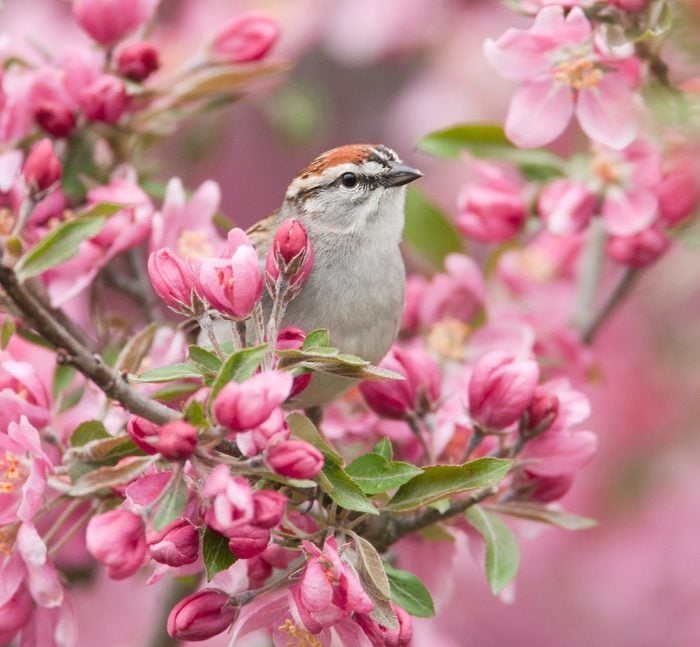
Flowering Crabapple
Malus, Zones 4 to 8
Size: 6 to 8 feet tall and wide to 20 to 25 feet tall and wide
Crabapples are the darlings of cool-climate yards. Flowers of white, pink or deep crimson transform into dainty fruits in yellow, orange, maroon or red. Select a newer variety to ensure good disease- and pest resistance, and plant these small flowering trees in full sun.
Why we love it: The diversity! Tree shapes can be rounded, spreading, upright, vase shaped and even weeping crabapple.
Backyard tip: Crabapples make great nesting trees for chipping sparrows (above), and they also are host plants for io moth larvae.
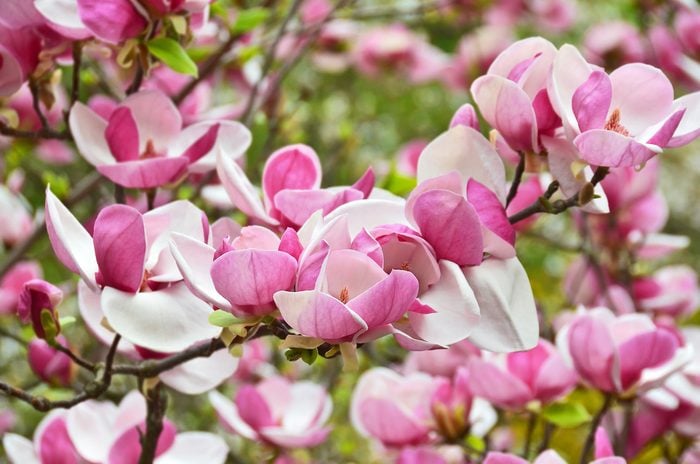
Magnolia
Magnolia, Zones 4 to 9
Size: 15 to 40 feet tall and wide
Gorgeous blooms in white, pink, yellow and purple balance like teacups or starbursts atop branches that later bear green leaves, some as glossy as lacquer. Plant in full sun to part shade.
Why we love it: There’s one for almost every region, from star magnolia (Magnolia stellata) in the chilly north to southern and champaca magnolias in the balmy south, and saucer magnolias everywhere in between.
Backyard tip: Replace all of the grass that surrounds freshly planted and young trees with organic mulch. Grass is a fierce competitor for water and other nutrients, and it can drastically slow the growth of your tree.
Discover fabulous facts about flowering trees.
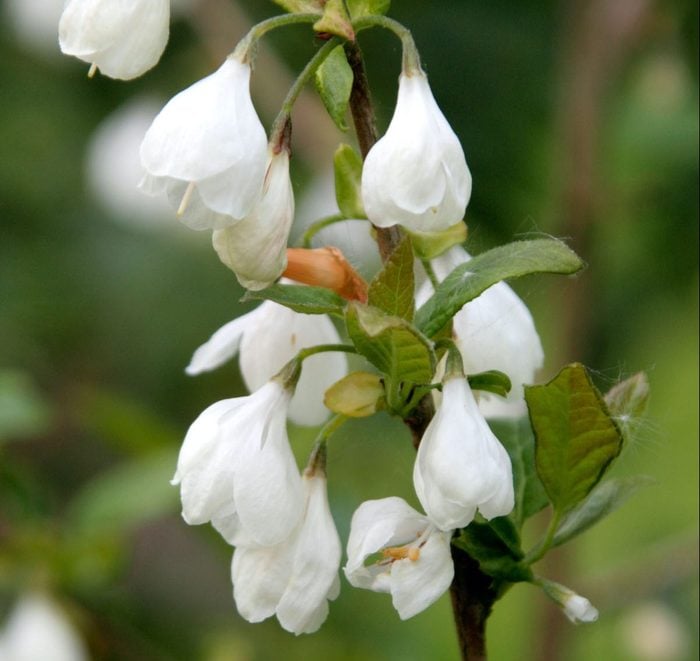
Carolina Silverbell
Halesia tetraptera (or Halesia carolina), Zones 4 to 8
Size: 30 to 40 feet tall, 20 to 35 feet wide
Almost maintenance-free and able to grow in full sun to full shade, keep Carolina silverbell moist and in well-draining, acidic soil. Test your soil for a pH below 7.
Why we love it: Children and adults alike might believe that fairies come by to ring its elegant white or rose bell-shaped blossoms.
Attract birds and more with a mountain ash tree.
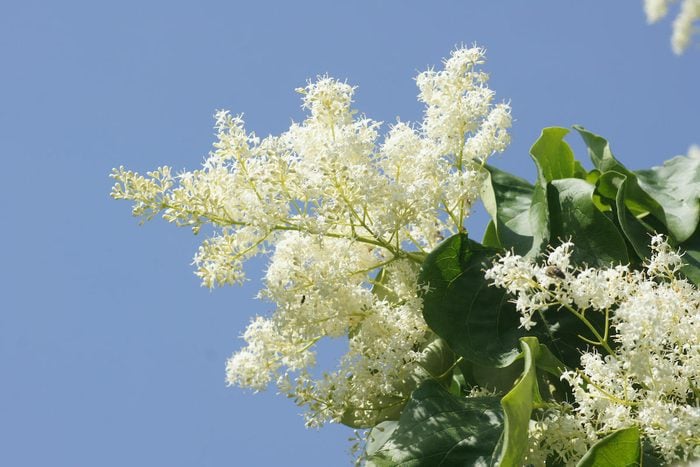
Japanese Tree Lilac
Syringa reticulata Ssp. reticulata, Zones 3 to 7
Size: 20 to 30 feet tall, 15 to 25 feet wide
Flowering a bit later than other lilacs, this underused small flowering tree releases a sweet scent from its cone-shaped panicles of ivory blooms. Sorry southerners, but this is a cold-climate choice. Plant in full sun.
Why we love it: It’s unusual and grows even in the most difficult places such as highway medians.
Check out the top 10 dwarf conifers for your yard.
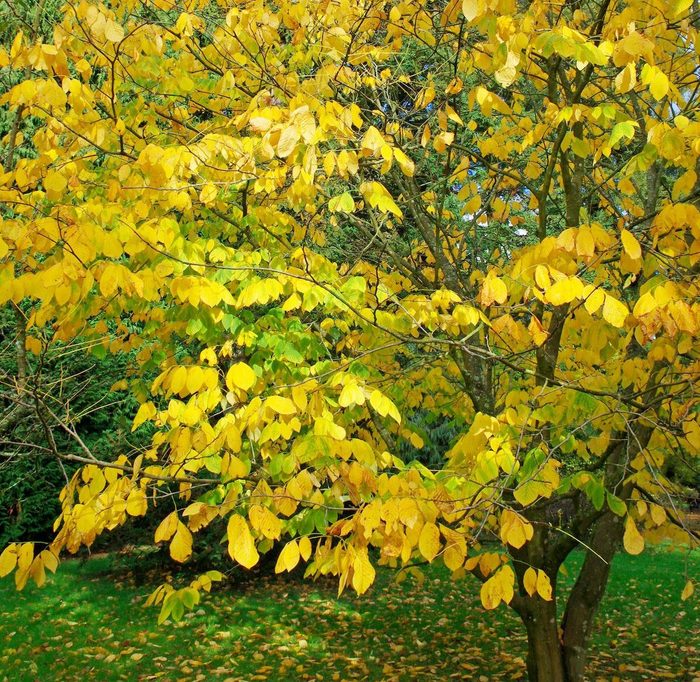
Yellowwood
Cladrastis kentukea, Zones 4 to 8
Size: 30 to 50 feet tall and slightly wider
Yellowwood’s best bloom show occurs every other year, when you’re treated to cascading 8- to 14- inch sprays of delicate, fragrant white blossoms. Grow it in full sun. If you live in areas of heavy snow, beware of branches that snap off in winter.
Why we love it: This is a blooming shade tree, and has bark like a beech tree, providing winter interest.
We found 15 trees you should never grow in your yard.
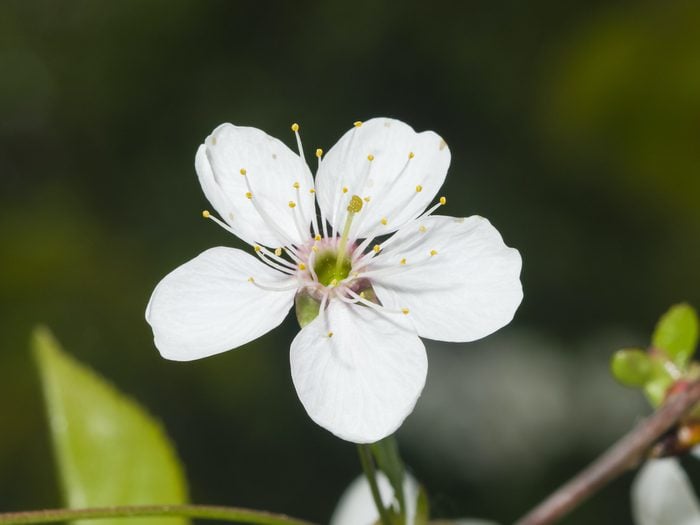
Apple Serviceberry
Amelanchier x grandiflora, Zones 4 to 9
Size: 20 to 25 feet tall and wide
Apple serviceberry is just one kind of serviceberry that’s perfect for most landscapes, thanks to its moderate size, bird-attracting berries and ability to thrive in sun to part sun locations.
Why we love it: It’s a special tree with four seasons of beauty: spring blooms that become red-purple edible fruits, green leaves that flush with orange to red fall color, and smooth silver bark that’s gorgeous in winter.
Discover the top 10 dwarf fruit trees for small spaces.
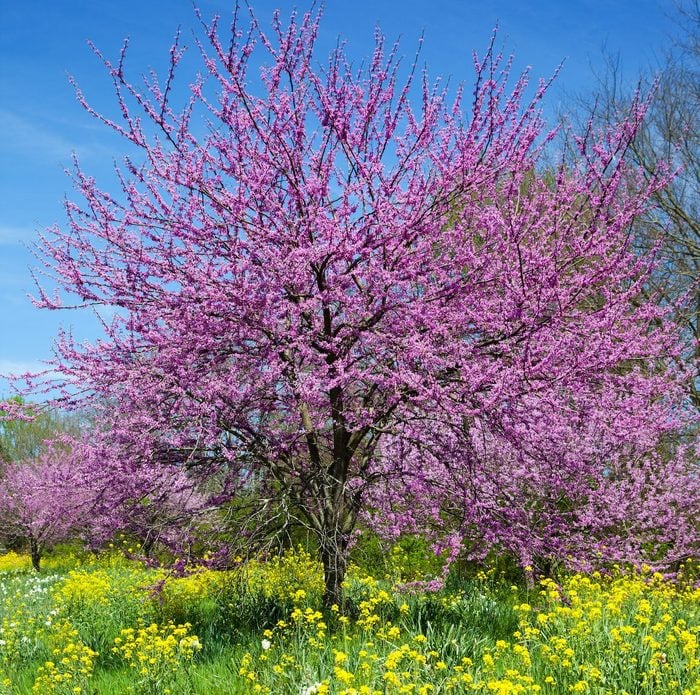
Eastern Redbud
Cercis canadensis, Zones 4 to 9
Size: 20 to 30 feet tall, 25 to 35 feet wide
Dainty rose-purple blooms dramatically hang from the branches of this North American native well before the heart-shaped leaves appear. Plant in full sun to part shade.
Why we love it: The small size fits most yards. You can select alternate leaf colors, such as burgundy Forest Pansy or lime-gold The Rising Sun.
Backyard tip: Plant your eastern redbud tree in a spot where it has space to spread out, because this spring showstopper is wider than it is tall.
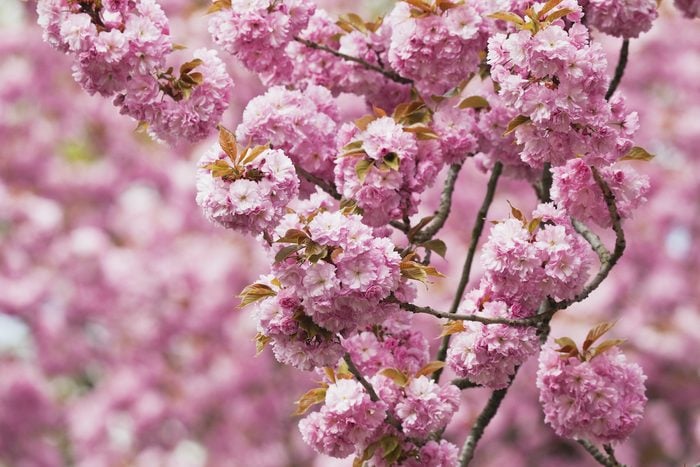
Japanese Flowering Cherry
Prunus serrulata, Zones 5 to 8
Size: 40 to 50 feet tall and 25 to 40 feet wide
You might ooh and aah every spring at the photos of the cherry tree display in Washington, D.C., but you can plant a flowering show of your own. Choose a spot in full sun.
Why we love it: With the right cultivar, those gorgeous pink or white blooms turn into fruits that birds—especially robins, cardinals and waxwings—crave.
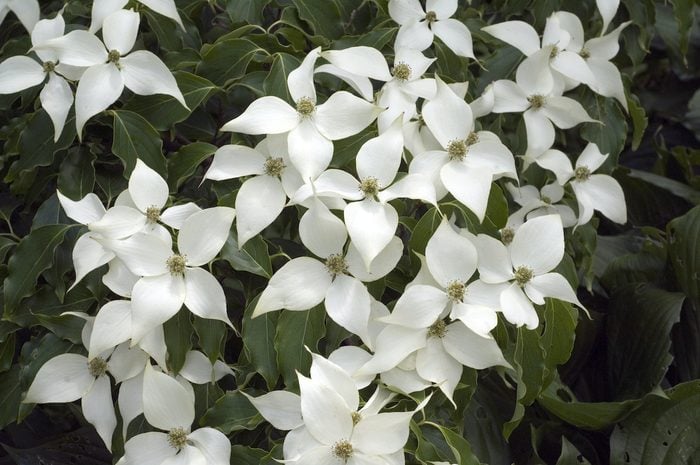
Dogwood
Cornus kousa, Zones 5 to 8; Cornus florida, Zones 5 to 9
Size: 20 to 40 feet tall and wide
Flowers up to 4 inches wide grace the spring branches of North American and Asian dogwoods. Test your soil pH before planting because dogwood grows best planted in acidic soil in full sun to full shade.
Why we love it: In addition to the graceful spring flowers and fall leaf colors, the colorful red fruits produced by dogwood are gobbled up by feathered friends.
Attract more birds with a silky dogwood shrub.
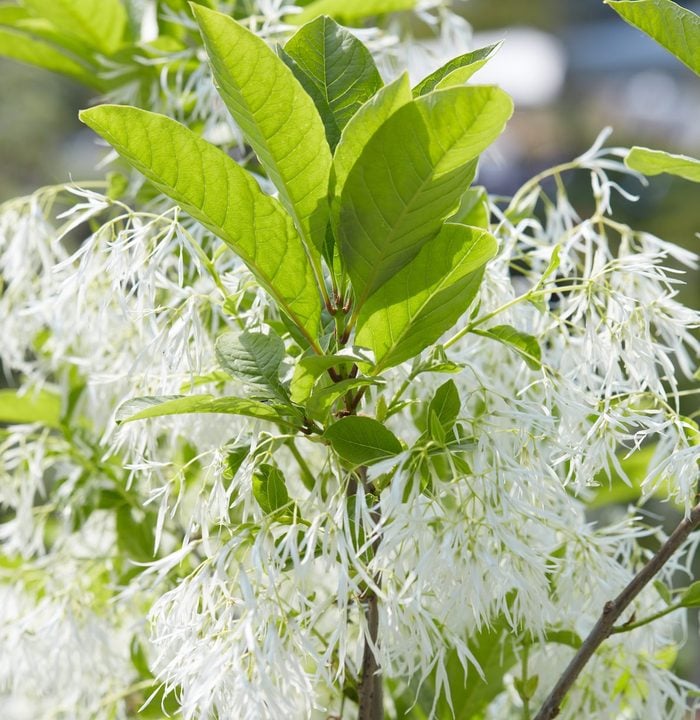
White Fringe Tree
Chionanthus virginicus, Zones 4 to 9
Size: 12 to 20 feet tall and wide
Native from southern Pennsylvania, south to Florida and west to Texas, fringe tree bursts onto the spring scene with lightly fragrant strappy white petals. They’re held in small groups attached at the top like tassels.
Why we love it: It’s the best-kept secret among spring-blooming trees, yet it’s one of the most adaptable, thriving in full sun to part shade. Female trees produce blue fruits that birds love.
Check out our complete guide to growing holly trees and berries.
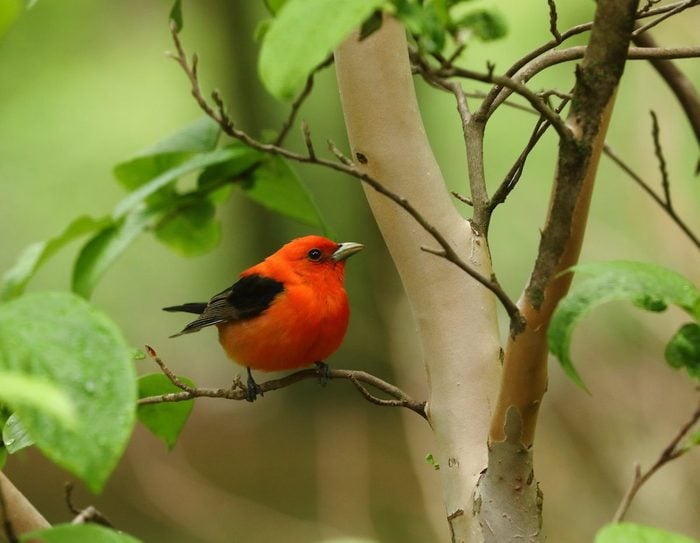
Late-Blooming Small Flowering Trees
These uncommon flowering trees wait until summer to unfurl their signature look.
- Japanese Stewartia (Stewartia pseudocamellia): “Camellia” in its botanical name (above) says something about the flowers. Zones 5 to 8.
- Sourwood (Oxydendrum arboreum): Tiny, fragrant, white bell-shaped flowers hang in cone-shaped clusters. Zones 5 to 9.
- Korean Evodia (Tetradium daniellii): It’s also called the bee tree, thanks to small white blossoms on female plants. Zones 4 to 8.
Next, learn how to grow a tulip poplar tree.
